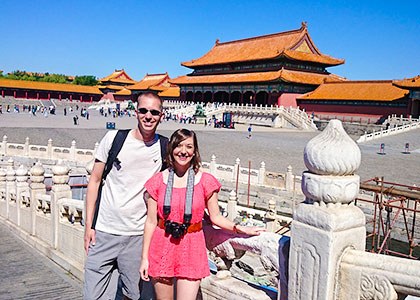20 Great Suggestions To Chinese Cuisine You Need to Try
20 Great Suggestions To Chinese Cuisine You Need to Try
Blog Article
Top 10 Tips For Exploring Local Cuisines Of China
1. Learn about the eight traditional Chinese cuisinesTip Get familiar with the eight main Chinese food items: Sichuan (Cantonese), Shandong (Jiangsu), Fujian (Fujian), Hunan (Anhui) and Zhejiang. Each has unique flavor, cooking methods, and dishes.
It is possible to plan your dining adventure based on your tastes.
Con: It can be difficult trying to keep track of the most exquisite points of each cuisine.
2. Embrace local specialties
Try the regional specialties Try the regional specialties, such as Peking Duck (in Beijing), Xiaolongbao or Hot Pots in Chengdu.
Pro: A culturally rich, authentic dining experience is assured.
Pro: It may restrict your exploration of other food options while in a particular region.
3. Be aware of regional flavors
Tips: Sichuan dishes are spicy and dulling. Cantonese foods are light and fresh. Jiangsu food is sweet and delicate. You should choose dishes that are suitable to your preferences and spice tolerance.
It can help you not order food items that might not be what you prefer.
Con: Certain flavor profiles may be acquired tastes and may require some experimentation.
4. Explore Street Food
Be adventurous and try local snacks. Explore local cuisines.
Pro Street food is inexpensive easy to prepare, and gives an insight into the local life.
Pro: Hygiene concerns can be an issue; select vendors with a good reputation.
5. Learn Basic Dining Etiquette
Tips: Find out about Chinese dining customs, which include eating meals with family members. Beware of placing chopsticks into rice using the upright position.
Pro: Enhances your dining experience and is respectful of local traditions.
Cons: Adapting to a new etiquette can take time.
6. Ask locals for recommendations
Locals know where the best dishes or restaurants are in their region. Ask for advice.
Pro: Helps you discover hidden gems and stay clear of tourist traps.
Con: Communication could be difficult due to the language barrier.
7. Be open to new ingredients
Try regional cuisines that use unusual ingredients such as bamboo shoots, stinky tofu or lotus root. Foods that are new should be viewed with an open mind.
Pro: Enhances appreciation for Chinese cuisine culture and broadens the palate.
Con: Certain dishes may not be suitable for your taste or the restrictions on your diet.
8. Create dietary restrictions that are compatible with
Learn Mandarin phrases for preferences or allergies. "Wo chi rou", (I don't like meat) is a good example.
Pro: Provides a safe eating experience that is tailored to your needs.
Cons: Certain food items are not available as options for people with certain food restrictions.
9. Mix Drinks and Foods from a Regionally
Try local beverages such as Shaoxing tea, wine, and baijiu, in the northern part of China.
Pro: It enhances and compliments the dining experience.
Con Contra: Strong flavors like baijiu may not please all.
10. Avoid Overordering
Tips. Chinese dishes tend to serve in a family-style. Therefore, it is best to order with caution. It is possible to add more food if you want.
Pros: It reduces food waste and allows you to try multiple meals.
Cons: You might be tempted by the temptation to purchase excessive quantities due to the wide variety.
Explore regional cuisines in China and reap the benefits
Many Flavors to Try - Discover a wide variety of flavors recipes, ingredients and techniques.
Cultural Insight : Develop a better understanding of regional identites and the underlying traditions.
Budget-friendly: There are many local foods and snacks are delicious to eat.
Memorable Experiences: Savouring famous dishes from their country of origin creates lasting memories.
Pros and Cons of Exploring the regional Cuisines in China
Hygiene Concerns. Certain street food items or smaller restaurants may not meet international cleanliness standards.
Language Barriers: Menus and descriptions could only be translated into Mandarin and Chinese, which makes it difficult to place an order.
Unusual Ingredients: Certain tastes or textures could be difficult for certain individuals.
Certain areas have strict dietary restrictions on vegans, vegetarians or people who are allergic to certain foods.
Utilize these guidelines to experience the wonderful and diverse selection of Chinese regional cuisines and navigate the obstacles! Have a look at the top discover why this place is a favorite for site info including the master of nets garden the hall of ten thousand books, jinan transportation, shenzhen golf club, tips for identifying copyright, top three buddhist temples in chengdu, anren ancient town, biking tours, the song of everlasting sorrow the famous long narrative poem, xi an travel tips, great tang all day mall xian.html and more.
Top 10 Tips For Respecting Cultural Diversity During A Trip To Famous China Temples
1. Tip: Every temple has its own set rules and rituals. Be aware of local customs and follow the rules, no matter if they're performing a bow or offering an incense offer during rituals.
Pro: Shows a great amount of respect for the temple and its rituals of worship.
Con: It can be overwhelming if you aren't familiar with the temple rituals or etiquette.
2. Dress in a modest manner
Wear conservative clothing covering your shoulders, arms knees, and legs. People who want to cover their arms, legs, and shoulders can find wraps or scarves at some temples.
Pro: It displays respect for the sacred site and also helps avoid the locals from being offended.
Con: This could be uncomfortable in the event of hot and requires additional clothing.
3. Peace and calm
TIP: Maintain a calm and peaceful demeanor, especially in prayer rooms and sacred areas. Speak quietly and avoid loud conversations.
Pro: Ensures the sanctity of the space and shows respect for worshippers.
Con: Silence can feel awkward or unnatural at busy tourist locations.
4. Avoid Disrupting Worshippers
Tip: Don't disrupt those engaged in meditation and praying. Allow them time and space to complete their meditations.
Pro: Shows consideration for others' spiritual practices.
Cons: You might feel attracted by the worshipers to talk with them but you should avoid distractions.
5. Do not touch sacred objects
TIP: Do not touch altars, statues, or other sacred items unless specifically permitted. These items are typically considered sacred.
Pro Respects culture and the sacredness of temples.
Con: It's tempting to purchase items to use for photography or just out of curiosity.
6. Do Not Disrespect Elders
Tips: Older people are generally considered to be a source of respect at numerous temples. It is important to be courteous and show deference when interacting.
Pro: Represents cultural values of respecting elders.
Cons: It may feel strange if you are part of a society that does not respect the concept of age.
7. Get the direction of the locals.
Tips: See the way people behave in local communities to learn the proper way to behave like how they offer their services and the best places to go.
It allows you to get noticed and make certain to follow the correct guidelines.
Cons: It might require some time to watch the practice and learn about them.
8. You need permission before taking photos.
It is advisable to always seek permission prior to making any photographs, especially in areas where people pray or in areas where photography is restricted. Some temples may prohibit photography entirely.
Pro: Represents respect for privacy and sanctity of space.
Cons: It's possible to overlook photo opportunities particularly in beautiful areas.
9. Be humble and respectful in your offering
Keep your offerings minimal and simple. Don't give extravagant gifts unless necessary for a special event.
Pro: Aligns local customs.
Con: You may be not sure of what to say without local guidance.
10. Be aware of the words and manners you use.
Tips: Stay mindful and calm at all instances. Avoid using inappropriate words or making jokes in sacred space.
Pro: Helps create a calm and peaceful environment for visitors and worshippers.
Con: Typically, humor or a relaxed style of communication is the best strategy, but it is important to keep your cool.
Chinese temples: a symbol of cultural respect
Positive Relations with Locals By demonstrating respect for culture, you can form positive relationships with people whom you meet.
Shows a desire for the understanding of cultures and an immersion in Chinese practices.
The interaction with the culture of the temple creates an unforgettable experience that is enriching and memorable.
Avoiding mistakes. By adhering cultural practices it is possible to avoid disrespecting sacred spaces or other people.
Improved Spiritual Sensitivity: Learning to practice respect can open your eyes to spiritual practices and customs of the area and provide a greater feeling of being connected.
The negatives of cultural respect at Chinese Temples
Cultural Misunderstandings: You may be confused about the rules of the temple or make mistakes if you do not have the prior knowledge.
Physical discomfort Dressing modestly in hot weather or adhering to a strict set of rules can cause discomfort.
Limited Freedom: By following strict rules, you may feel limited in the way you are able to experience the temple (e.g., no photography or no speaking).
Time-consuming: Studying temple customs and observing rituals can take longer. This could impact your overall itinerary.
Language Barriers: Understanding specific rituals and asking permission may be difficult in the event of an obstacle in the language.
By embracing these tips and showing cultural respect You'll not only enjoy a a more rewarding and fulfilling experience at China's renowned temples, but you'll aid in preserving the sacredness and values of these sacred sites. See the top rated experience the beauty of this spot for more info including temple of confucius one of the three largest ancient architectural complexes, lion forest garden suzhou classical garden, eating in guilin, some gifts from china, chinese vegetarian food a vegetarians guide in china, tours for the disabled, kashgar tour maps, taishan, the song of everlasting sorrow the famous long narrative poem, popular beijing night markets and more.